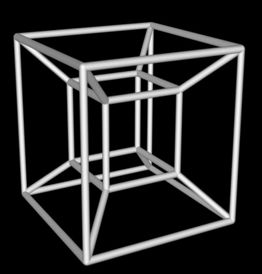God's Compensation/Basics of multi-dimensional theory
We all learned in Geometry class about the 3 spatial dimensions that we live in. These 3 dimensions are length, width, and depth. According to multi-dimensional theory, a higher dimension, in order to be defined as a higher dimension, must be able to intersect with its lower-dimension counterparts at a right angle.
What this means for the 4th dimension and higher is that we have absolutely no way to express what this might look like in our 3 dimensional world. However, if we were to live in 4 dimensions, then it would be possible to express a 3 dimensional object in such a way that it would look like a piece of paper to them, and they would be able to see a place where they could draw a line that would simultaneously be perpendicular to all 3 of the lower dimensions at once.
This sounds impossible to 3 dimensional creatures like us, but due to the fact that the 4th dimension has been verified to exist it means it is possible.
4D shapes
Some multi-dimensional theorists have formulated what 4, 5, and 6 dimensional objects might look like by extrapolating out the shape of 3 dimensional polygons such as cubes and tetrahedrons (3D Triangles) and modeled what they might look like as they pass through our 3D universe. The most well known of these shapes is the Tesseract, the 4 dimensional version of a cube.
Below is an image of what a transparent Tesseract would look like, with only its edges highlighted. It is made transparent in order to get closer to what it might look like naturally to a 4 dimensional being. To us, it just looks like a cube inside of another cube. In reality though, it is actually 8 cubes squished together. The 45 degree angle lines that connect the smaller cube inside to the larger outside cube are actually the edges of cubes that are, from our 3D perspective, deformed into trapazoids or pyramids with their tops removed.
While that may sound interesting though, one cannot really appreciate a 4 dimensional shape like a tesseract unless they see it moving. Yes, moving. Presumably, these should be solid objects from a 4 dimensional perspective, but in our 3 dimensional space changing the angle that you view a 4 dimensional shape from will seem to cause the entire object to change its shape and re-form itself. Viewing such a thing though is likely to cause some sense of disorientation, so a GIF of a moving tesseract will be provided on a separate page, the link to that page is below.
